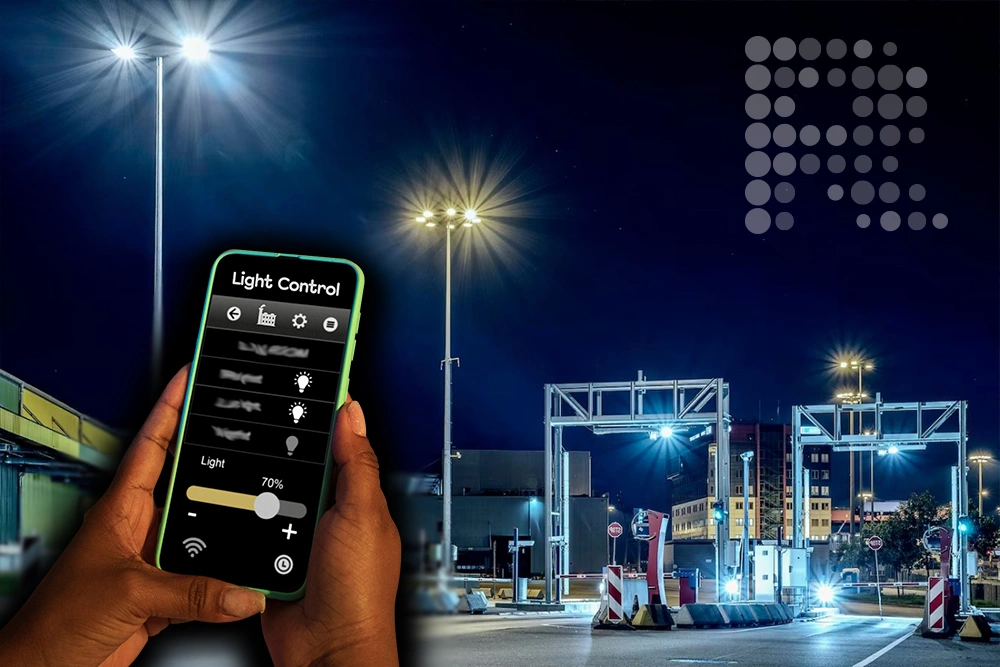
Here’s a general Industrial IoT (IIoT) Educational Book Draft that outlines the concept, applications, and benefits of IIoT across industries. It’s structured for a wide audience, highlighting the transformative impact of IIoT without focusing on specific competitors or clients.
Industrial IoT (IIoT): Transforming Industries with Smart Connectivity
Introduction
The Industrial Internet of Things (IIoT) is reshaping industries by connecting machines, devices, and systems to streamline operations, enhance productivity, and reduce costs. Leveraging data analytics, real-time monitoring, and automation, IIoT empowers businesses to adapt and thrive in the age of digital transformation.
Chapter 1: What is IIoT?
Definition and Evolution
• IIoT refers to the integration of IoT technology into industrial operations, enabling seamless communication between machines and systems.
• Evolution from traditional SCADA systems to smart, cloud-based platforms.
Core Principles
1. Connectivity: Machines and devices interconnected via secure networks.
2. Data-Driven Insights: Real-time analytics for better decision-making.
3. Automation: Improved efficiency and precision with automated processes.
Chapter 2: Components of IIoT
Smart Sensors and Devices
• Types of sensors: Temperature, vibration, humidity, and motion.
• Role in data collection and monitoring.
Industrial Gateways
• Bridge between sensors/devices and the cloud.
• Protocol compatibility: Modbus, OPC-UA, MQTT.
Edge Computing
• Real-time data processing at the edge for faster decision-making.
Cloud Platforms
• Centralized data storage and analytics.
• Scalability for small to large industrial setups.
Communication Protocols
• MQTT: Lightweight messaging protocol for real-time communication.
• OPC-UA: Ensures interoperability between diverse industrial systems.
• LoRaWAN and NB-IoT: Long-range, low-power protocols for remote monitoring.
Chapter 3: Applications of IIoT
1. Manufacturing
• Smart factories with predictive maintenance and quality control.
• Automation of assembly lines for higher efficiency.
• Real-time inventory tracking and optimization.
2. Energy and Utilities
• Monitoring energy consumption and optimizing power distribution.
• Remote management of renewable energy assets like solar farms and wind turbines.
3. Oil and Gas
• Monitoring pipeline health and detecting leaks.
• Enhanced safety through real-time equipment monitoring.
4. Transportation and Logistics
• Fleet tracking and route optimization.
• Warehouse automation with IIoT-enabled robots and conveyors.
5. Agriculture
• Precision farming with soil and crop monitoring.
• IoT-enabled irrigation systems for water conservation.
6. Healthcare
• Asset tracking for medical equipment.
• Environmental monitoring in pharmaceutical manufacturing.
Chapter 4: Key Features of IIoT Systems
1. Predictive Maintenance
• AI-driven analysis of machine data to predict failures.
• Minimized downtime and extended equipment lifespan.
2. Remote Monitoring and Control
• Access data and control operations from anywhere.
• Applications in hazardous environments like oil rigs or mines.
3. Energy Optimization
• Monitor energy usage and identify inefficiencies.
• Implement energy-saving strategies.
4. Real-Time Analytics
• Dashboards displaying KPIs like equipment uptime, efficiency, and throughput.
5. Security
• Ensuring data integrity with encryption and secure protocols.
• Regular updates to safeguard against cyber threats.
Chapter 5: Benefits of IIoT
1. Increased Efficiency
• Streamlined workflows and reduced manual intervention.
• Faster response times with real-time alerts.
2. Cost Savings
• Lower operational costs through automation and energy optimization.
• Reduced maintenance costs with predictive strategies.
3. Improved Safety
• Monitoring of hazardous environments.
• Early detection of potential risks or system failures.
4. Enhanced Decision-Making
• Data-driven insights for strategic planning.
• Historical data analysis for long-term improvements.
Chapter 6: Deployment Strategies
1. Assessing Needs
• Identify key pain points and operational inefficiencies.
• Evaluate readiness for IIoT adoption.
2. Choosing the Right Platform
• Consider scalability, interoperability, and security.
• Integrate with existing systems for seamless transition.
3. Implementation
• Gradual deployment to minimize disruption.
• Pilot projects to test solutions before full-scale implementation.
4. Training and Support
• Upskill workforce to handle IIoT systems.
• Provide ongoing support for system maintenance and upgrades.
Chapter 7: IIoT in Action
Case Studies
1. Manufacturing: Improved throughput in a smart factory using predictive analytics.
2. Energy: Real-time monitoring of solar farms to maximize output.
3. Transportation: Optimized delivery routes with IIoT-enabled fleet management.
Chapter 8: Challenges and Future Trends
Challenges
• Data security concerns and the need for robust cybersecurity.
• Integration with legacy systems.
• Initial cost of deployment.
Future Trends
1. AI and Machine Learning: Deeper insights from vast amounts of industrial data.
2. 5G Networks: Faster, more reliable communication for IIoT devices.
3. Digital Twins: Virtual models of physical assets for testing and optimization.
4. Sustainability: Using IIoT to minimize waste and enhance energy efficiency.
Chapter 9: Sustainability Through IIoT
• IIoT’s role in reducing industrial emissions.
• Applications in renewable energy monitoring and waste management.
Conclusion
The Industrial Internet of Things is more than a technological advancement; it’s a revolution that empowers industries to operate smarter, faster, and more sustainably. By embracing IIoT, industries can unlock unprecedented potential, driving growth and innovation into the future.
Appendices
1. Glossary: Definitions of terms like MQTT, Edge Computing, and Digital Twin.
2. FAQs: Common questions about IIoT adoption and implementation.
3. Technical References: Protocol specifications and system requirements.